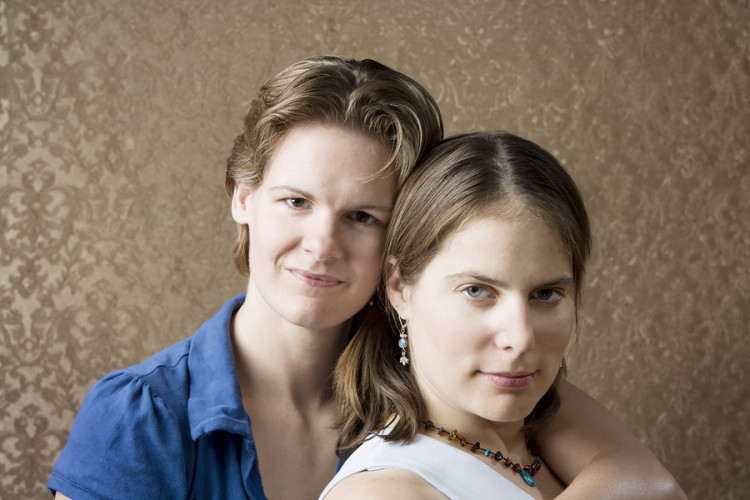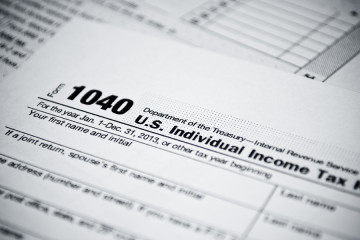A Momentous, Yet Conservative, Win for Gay Rights: Noah Feldman

©2015 Bloomberg View
NZQCL96JTSE8
NZQCL96JTSE8
(Bloomberg View) — Reviewing the year at the U.S. Supreme Court, there’s no question that the outstanding historic moment was June’s decision in Obergefell v. Hodges, in which the court recognized — or, if you prefer, invented — a right to gay marriage.
There was nothing substantively surprising about the decision itself. Justice Anthony Kennedy had been preparing the way for 20 years, melding the principles of equality and due process into a jurisprudence of “equal dignity.”
What’s surprising is the lack of sustained national opposition to the decision. In the contentious, circuslike Republican primary campaign, there has thus far been astonishingly little discussion of Obergefell and how to combat it or roll it back. The candidates seem mostly to agree that the decision was wrong. But as Donald Trump put it in August:
Some people have hopes of passing amendments, but it’s not going to happen. Congress can’t pass simple things, let alone that. So anybody that’s making that an issue is doing it for political reasons. The Supreme Court ruled on it.
Outside the presidential race, the response isn’t much greater. Brown v. Board of Education, decided unanimously, generated extensive resistance, with Southern governors standing in schoolhouse doors to block racial integration. Obergefell, decided 5-4 over stinging dissents from all of the conservative justices, has given us Kentucky clerk Kim Davis and a few efforts to adopt state-level Religious Freedom Restoration Acts.
What explains the lack of political focus on the ruling? The question matters a lot for understanding the Supreme Court. Since the 1920s at least, the most pressing subject for court observers has been the interplay between judicial activism, right and left, and public reception of the court’s decisions.
Many scholars think that the court shouldn’t expand rights too quickly or get beyond public opinion, lest it lead to backlash. Justice Ruth Bader Ginsburg has suggested that the court may have committed that error in Roe v. Wade, creating an abortion right before the public was ready for it.
The superficial answer would be that the public is ready for same-sex marriage, at least directionally. Polls have shown gradually and steadily increasing support, so perhaps opponents have accepted that they’re on the losing side of history.
But that can’t be quite right. Those who oppose gay marriage remain firm in their beliefs, which are mostly grounded in biblical condemnation of homosexuality itself. The ideal of gay marriage may make some tiny inroads with younger believers in this community. But it’s hard to get around the scriptural basis for the rejection. My expectation is that, in 25 years, those who consider themselves biblical literalists will still be saying gay marriage is wrong.
The answer, I think, lies in the fundamentally conservative nature of Kennedy’s gay-marriage decision — and of the gay- marriage movement more generally. This has long been recognized within the gay-rights community, where an internal debate raged for years between the marriage advocates like pioneer Evan Wolfson and more radical advocates of queer politics who argued that seeking marriage equality meant assimilating to straight norms.
Luckily for the marriage equality movement, most straight liberals either didn’t notice the debate or sided with the gay moderates. The central political and constitutional argument for gay marriage became the powerfully convincing notion that gay people’s relationships and families are no different from straight people’s and that it makes no sense to deny them marriage rights.
Kennedy bought it. He not only spent many pages of his opinion telling the personal narratives of gay couples, the better to show the common humanity of their lives. He also produced an extended reflection on the inherent value of marriage as a response to what he described as the problem of existential loneliness. In Kennedy’s presentation, marriage became a necessary component of universal human experience.
This judicial performance was more or less what queer theorists had been worried about — that the state of being unmarried would become a new kind of social outlier, one not explainable or excusable by the fact that the single person might be gay. The court took steps to make heterosexuality less normative as a condition. But at the same time it made being married even more normative than it already was.
That very conservative aspect of the gay-marriage decision helps explain why conservatives aren’t in revolt against it to the extent one might have expected. In the end, it’s hard for conservatives to be against marriage and family and parents — even if they’re gay marriages and family and parents.
The American cult of marriage, it turns out, is a pretty big tent. The sideshow debate about wedding photographers and bakers who might not want to provide services for gay weddings is a perfect proof. It shows that everyone is imaging gay weddings exactly like straight weddings. Same oversize cake, same posed photographs — even the same dresses and tuxedos in some configuration or other. What could be more conservative than that?
This column does not necessarily reflect the opinion of the editorial board or Bloomberg LP and its owners.
There was nothing substantively surprising about the decision itself. Justice Anthony Kennedy had been preparing the way for 20 years, melding the principles of equality and due process into a jurisprudence of “equal dignity.”
What’s surprising is the lack of sustained national opposition to the decision. In the contentious, circuslike Republican primary campaign, there has thus far been astonishingly little discussion of Obergefell and how to combat it or roll it back. The candidates seem mostly to agree that the decision was wrong. But as Donald Trump put it in August:
Some people have hopes of passing amendments, but it’s not going to happen. Congress can’t pass simple things, let alone that. So anybody that’s making that an issue is doing it for political reasons. The Supreme Court ruled on it.
Outside the presidential race, the response isn’t much greater. Brown v. Board of Education, decided unanimously, generated extensive resistance, with Southern governors standing in schoolhouse doors to block racial integration. Obergefell, decided 5-4 over stinging dissents from all of the conservative justices, has given us Kentucky clerk Kim Davis and a few efforts to adopt state-level Religious Freedom Restoration Acts.
What explains the lack of political focus on the ruling? The question matters a lot for understanding the Supreme Court. Since the 1920s at least, the most pressing subject for court observers has been the interplay between judicial activism, right and left, and public reception of the court’s decisions.
Many scholars think that the court shouldn’t expand rights too quickly or get beyond public opinion, lest it lead to backlash. Justice Ruth Bader Ginsburg has suggested that the court may have committed that error in Roe v. Wade, creating an abortion right before the public was ready for it.
The superficial answer would be that the public is ready for same-sex marriage, at least directionally. Polls have shown gradually and steadily increasing support, so perhaps opponents have accepted that they’re on the losing side of history.
But that can’t be quite right. Those who oppose gay marriage remain firm in their beliefs, which are mostly grounded in biblical condemnation of homosexuality itself. The ideal of gay marriage may make some tiny inroads with younger believers in this community. But it’s hard to get around the scriptural basis for the rejection. My expectation is that, in 25 years, those who consider themselves biblical literalists will still be saying gay marriage is wrong.
The answer, I think, lies in the fundamentally conservative nature of Kennedy’s gay-marriage decision — and of the gay- marriage movement more generally. This has long been recognized within the gay-rights community, where an internal debate raged for years between the marriage advocates like pioneer Evan Wolfson and more radical advocates of queer politics who argued that seeking marriage equality meant assimilating to straight norms.
Luckily for the marriage equality movement, most straight liberals either didn’t notice the debate or sided with the gay moderates. The central political and constitutional argument for gay marriage became the powerfully convincing notion that gay people’s relationships and families are no different from straight people’s and that it makes no sense to deny them marriage rights.
Kennedy bought it. He not only spent many pages of his opinion telling the personal narratives of gay couples, the better to show the common humanity of their lives. He also produced an extended reflection on the inherent value of marriage as a response to what he described as the problem of existential loneliness. In Kennedy’s presentation, marriage became a necessary component of universal human experience.
This judicial performance was more or less what queer theorists had been worried about — that the state of being unmarried would become a new kind of social outlier, one not explainable or excusable by the fact that the single person might be gay. The court took steps to make heterosexuality less normative as a condition. But at the same time it made being married even more normative than it already was.
That very conservative aspect of the gay-marriage decision helps explain why conservatives aren’t in revolt against it to the extent one might have expected. In the end, it’s hard for conservatives to be against marriage and family and parents — even if they’re gay marriages and family and parents.
The American cult of marriage, it turns out, is a pretty big tent. The sideshow debate about wedding photographers and bakers who might not want to provide services for gay weddings is a perfect proof. It shows that everyone is imaging gay weddings exactly like straight weddings. Same oversize cake, same posed photographs — even the same dresses and tuxedos in some configuration or other. What could be more conservative than that?
This column does not necessarily reflect the opinion of the editorial board or Bloomberg LP and its owners.
To contact the author of this story: Noah Feldman at nfeldman7@bloomberg.net To contact the editor responsible for this story: Stacey Shick at sshick@bloomberg.net
For more columns from Bloomberg View, visit http://www.bloomberg.com/view
For more columns from Bloomberg View, visit http://www.bloomberg.com/view







No Comment